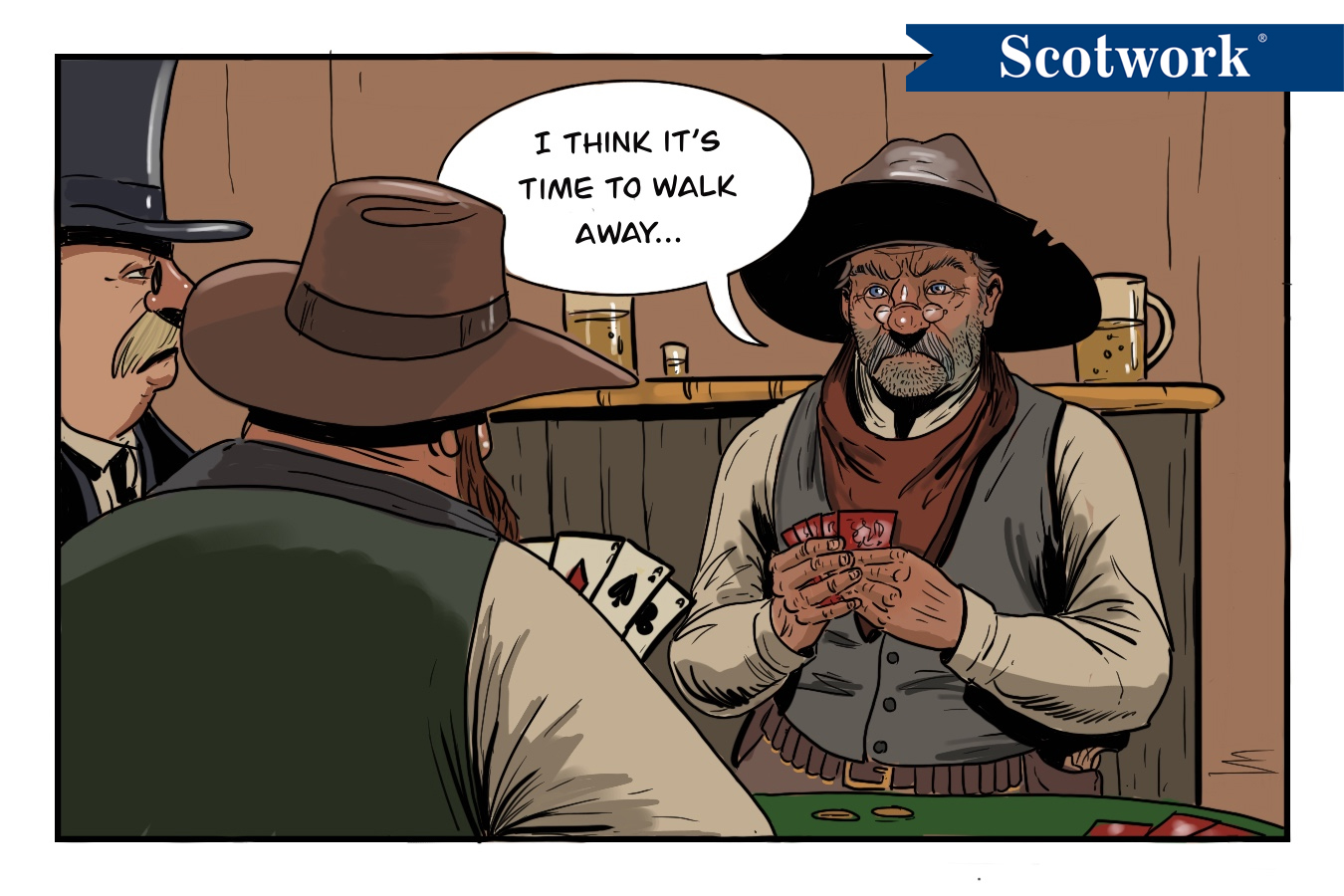When it comes to negotiating, one of the most difficult decisions we face is whether or not to walk away from the table. There’s a lot of finality to that decision, and it’s not one to be taken lightly. Recently, we were faced with that decision regarding a piece of business we were chasing. Walking away from potential business is never easy, but in some cases it’s the only path forward. Here’s what happened in our situation.
Not too long ago, we had reached out to one of our clients for a touch-base. They had been busy, dealing with various pandemic-related obstacles and opportunities, so it had been some time since we’d worked together. As we were talking with them, it seemed like they had an epiphany about a project they were working on and felt that we could help them. They were already pretty far along the vendor-selection process but nonetheless wanted us to join the conversation.
We were flattered and excited. We’ve always enjoyed working with this client, we know their business well, and it seemed like a good opportunity to start working together again. So, we agreed to talk further and provide our perspective.
However, as we read through the brief they sent us, we were unclear as to how we could actually help them with the entirety of the project. While there was a small piece that was perfect for us, we simply weren’t equipped to assist them with the rest of it.
We asked if they were willing to split the project up among multiple vendors. They said that wasn’t ideal, but if we could put together a compelling reason, they would certainly consider it. Not exactly what we wanted to hear. After all these years spent working together, we assumed they knew that we were best-suited for only a part of the project.
When developing any solution for a client, we start by focusing on driving a return for their investment. After all, our goal is to make a significant and positive impact on their business objectives that leads to tangible monetary results. In order to do that effectively, at a minimum we need to understand the business targets we’re being asked to impact, the investment threshold for the project, and how quickly they want to achieve their desired results.
As we asked these questions, we received incomplete answers. In fact, it started to feel like we were being asked to provide a blind quote to be used against other vendors, and we had to guess at what the solution might look like without any of the details necessary to create a compelling solution. Simply put, we knew we couldn’t be successful this way.
What started off as something we were all excited about devolved into an uncomfortable situation in which we felt we were being set up to fail. That’s when we asked ourselves, “Should we walk away?”
Fortunately for us, as I’ve shared above, we’ve developed a list of criteria that we need in order for us to be successful. For each project, we’ll adjust that list accordingly. The point is, we know our limits when walking into a negotiation, and we know how much flexibility we have on all of the issues being negotiated. Knowing that makes answering this tough question a lot easier.
However, once we get to that place of deciding whether or not to walk away, we also take a step back and challenge our thinking. We ask if we missed anything along the way, we explore why we’re feeling the way we are, and we look for alternatives to take rather than walking away. This helps us find holes in our assumptions and strategy. If there are holes, we address them, recalibrate, and try again. If there are no holes, then the decision becomes clear.
We didn’t want to walk away from this project. After all, it was with a good client with whom we have a great working relationship. However, we also didn’t want to risk the relationship by taking on a project that exceeded our limits and wouldn’t allow us to bring our best selves to the table. So, we politely turned down the project.
The client was disappointed but understood our decision. They respected that we had a strong sense of how we could be successful for them and appreciated that we didn’t take on something that we knew wouldn’t produce optimal results for them.
In the end, no one likes to turn down business. That’s precisely why we spend so much time understanding our limits and setting them. It’s not so that we limit our creativity or aspirations. Quite the contrary: It’s so that we can be free to explore the space where we know we can succeed. When you’re being asked to reach beyond your space of success, it’s probably best to walk away in order to protect yourself, your organization and, just as importantly, the other side.
We Can Help You Decide Whether or Not to Walk Away from the Negotiating Table.
When it comes to negotiating, one of the most difficult decisions you face is whether or not to walk away from the table. There’s a lot of finality to that decision, and it’s not one to be taken lightly. We can help! Drawing on 46 years of real-world negotiating experience, we’ll assist you with getting better deals, saving time, and creating value for all involved — not to mention preserving and even strengthening relationships. Let us partner you with one of our advisers, ensuring that you’ve got the broadest view of your deal.

